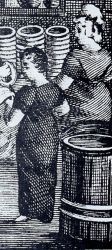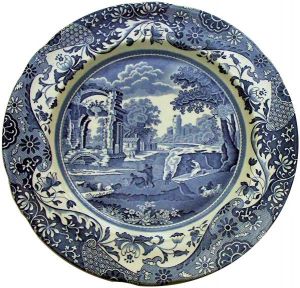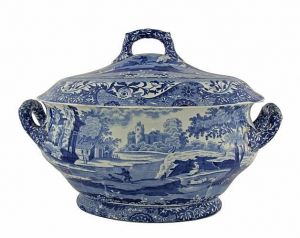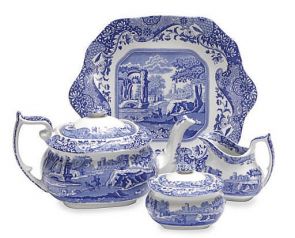And More on Hot Press Printing
Continued
Battam, as the art director for Copeland Works at the time, clearly had an intimate knowledge of the printing process, and it changed little from its introduction in 1784/5 until the twentieth century. The creation and application of transfer printed designs demanded a great deal of skill and creativity. Engraving a single design such as a Blue Italian dinner plate might have taken more than two months. An entire service might have required more than fifty different copper plates. Matching printed designs to the biscuit wares was an exacting job. As one pair of scholars has stated, “badly cut patterns with missing pieces and smudged impressions could mar the best of prints however well placed upon the ware.” The overwhelming majority of underglaze transfer printing appeared in blue, but other colors slowly appeared during the course of the nineteenth century. |
|

 “it is then immersed in a tub of water, and the paper washed entirely away with a sponge; the colour, from its adhesion to the ware, and being mixed with oil, remains unaffected. It is now necessary, prior to ‘glazing,’ to get rid of this oil, which is done by submitting the ware to heat in what are called ‘hardening’ kiln, sufficient to destroy it and leave the colour pure. This is a necessary process, as the glaze, being mixed with water, would be rejected by the print, while the oil remained in the colour.”
“it is then immersed in a tub of water, and the paper washed entirely away with a sponge; the colour, from its adhesion to the ware, and being mixed with oil, remains unaffected. It is now necessary, prior to ‘glazing,’ to get rid of this oil, which is done by submitting the ware to heat in what are called ‘hardening’ kiln, sufficient to destroy it and leave the colour pure. This is a necessary process, as the glaze, being mixed with water, would be rejected by the print, while the oil remained in the colour.” 

